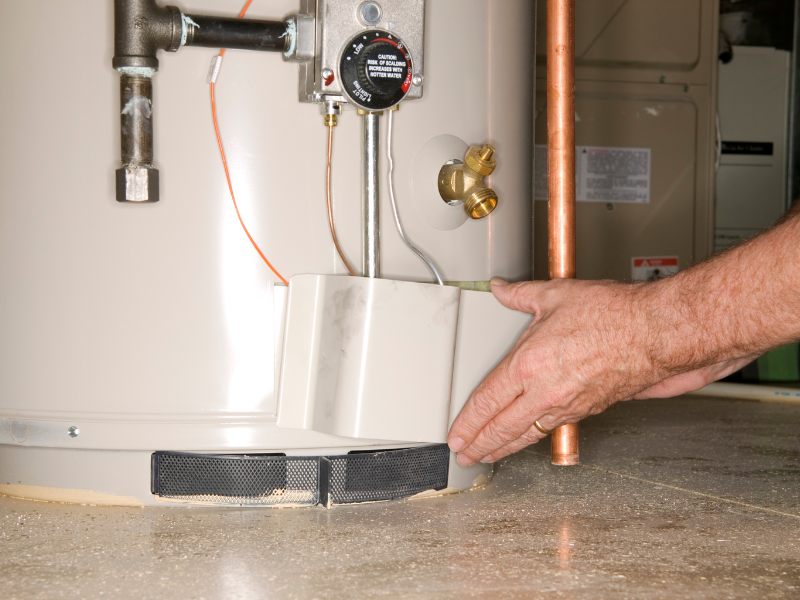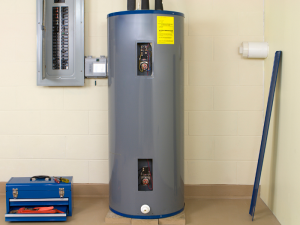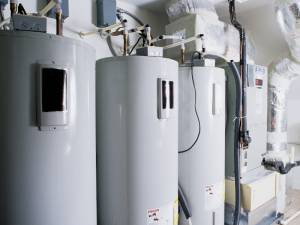Much like furnaces and some of the other HVAC systems in our homes, water heaters are a key part of our daily lives. Though separate from the central heating and cooling systems, having heated water whenever it’s needed is often considered to be one of the most vital parts of home comfort.
Many people all across the United States rely on their water heaters to relax and help themselves clean, so when an issue like a backdrafting water heater happens, it’s only natural for homeowners to start to worry.
What exactly is backdrafting? And what causes it?
It’s extremely important for homeowners to know the answers to these questions. Additionally, homeowners should know how to fix and prevent it from happening again.
In the meantime, though, if you’d rather have a professional’s opinion and want a technician to come and check whether you’re dealing with such a problem, our team at Clover Contracting is ready to help.
What Exactly Is Water Heater Backdrafting?
Have you been wondering what backdrafting is? If so, you might find a few similarities between backdrafting and a known plumbing issue. At its core, though, a water heater backdraft is what happens when the exhaust created from a running water heater travels back and spills into the room that the system is in.
Typically, this exhaust is from an “atmospherically” vented water heater, and the remnants of the fuel should be able to safely leave the house via said vents without any issues. However, the water heater in question often does have issues that lead to backdrafting, leading to toxic gasses filtering into your home.
The main problem when dealing with water heater backdrafting is the fact that it’s quite hard to catch and know the signs that say you’re dealing with this particular problem. Often, the exhaust that a water heater releases is made up of carbon monoxide and high amounts of moisture that can be acidic. Additionally, this moisture can be quite hot, further adding to the potential damage it can do to its surroundings.
Fortunately, most of these signs can easily be caught and fixed by a professional before the issue can become far worse.
What Causes Backdrafting in a Water Heater?
When it comes to what causes a backdrafting water heater, you’ll quickly find that there are many possible causes, though the issue is primarily caused by bad installations. Though the exhaust is mostly gas, the moisture in it still adds a bit of density to it.
Despite the exhaust not being denser than water, something as surprisingly simple as the angle of the vents, the number of sharp turns, and even the size of the vents themselves can cause backdrafting.
If you’re looking for the exact causes of backdrafting in a water heater, find that the most common cause of it is the angle of the vents. Also referred to as the vertical or horizontal pitch, the proper angle needed is ¼ of an inch for every foot that the vent is. Ultimately, the water heater’s manufacturer often has the ideal specifications needed to prevent both backdrafting as well as a few other common problems.
It also covers many of the other possible causes and the correct way to install the needed vents and other parts. You might also be able to find some of the other causes by scheduling an inspection with a qualified technician.
How to Check if Your Water Heater’s Backdrafting
The simplest way to check for a backdrafting water heater is to place your hands close to the water heater’s draft hood – the pipe or vent near the top. More likely than not, with your hands near it, you will be able to feel warm air or gas coming out of the unit, and if you use a mirror or some kind of glass as a tool, the moist vapors will cause it to fog up, much like steam.
Another way you can check for backdrafting is by checking with a match. If there is enough draft inside the vents, the draft will cause the flame to be pulled in. Many technicians and specialists also suggested testing for backdrafting by pouring smoke or powder into or around the draft diverter; if it leaks back into the room, then you’re dealing with backdrafting.
If you suspect that the water heater had been backdrafting for quite some time, consider taking a quick look at the draft hood and the parts around the system. In many cases, you might notice some charcoal-colored dark stains. Also, on pipes moving the hot and cold water, search for the plastic caps.
As mentioned before, exhaust gasses have a high temperature, and if they leak out from under the draft hood, any of the plastic components nearby may be damaged, warped, or even melted.
Backdrafting can also cause some of the metal to corrode due to the water vapor’s natural acidity. This corrosion can form on the top of the water heater, where hot gasses come into direct contact with colder metal components.
Solutions to Fixing Backdrafting
One great way you can fix back drafting is by installing a water heater backdraft preventer. Much like a backdraft preventer used in sewer pipes, a water heater-specific backdraft preventer forms a gate-like structure. From where it’s placed, the preventer only allows the exhaust to pass through one way, stopping the backward air flow completely.
Of course, if you want to learn more about how to fix backdrafting water heater units, you should speak with a qualified technician, like one of our team members at Clover Contracting.
Takeaway
Keep in mind that all venting installations must follow local codes and the manufacturer’s instructions. And if the situation calls for it, the backdrafting test is simple to do. If you suspect backdrafting, make sure to do the test after several minutes of operating the water heater with the windows and doors closed for safety. Then, contact our team at Clover Contracting for help fixing the issue or installing a backdraft preventer.




